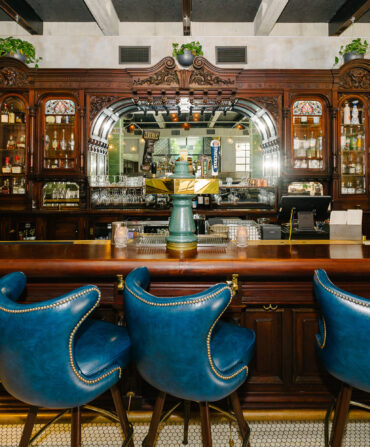When they clock off, bartenders, chefs, and servers will often enjoy a “shift drink,” a late-night libation that’s typically thirst quenching, easy to make, and cheap. At the Roosevelt Room in Austin, Texas, the co-owner and barman Justin Lavenue had the habit of popping open a cold Topo Chico sparkling mineral water, pouring out a bit to make room, then adding lime juice and absinthe.
The concoction became popular among his coworkers. And then—living out the fondest dream of shift-drink creations everywhere—it made the heroic leap to the cocktail menu and received a name: Death Valley. That was back in 2017. Bar customers clamored for it, and you can still find the option on the Roosevelt Room’s list.
And for good reason. For starters, the Death Valley is unusually refreshing and easy to make. Its name nods to Ernest Hemingway’s famous cocktail, Death in the Afternoon, which he contributed to a 1935 book of drink recipes with the stellar title So Red the Nose: Or, Breath in the Afternoon, a collection of cocktails conceived by notable authors. Hemingway’s recipe called for a healthy jigger of absinthe, which was then diluted with Champagne. Hemingway suggested drinking “3 to 5 of these slowly.” (The book’s waggish editor noted that after six of them, “the sun also rises.”)
Lavenue loved the sprightly effervescence of Topo Chico—the mineral water born in Mexico in 1895 that tickles the nose more than most thanks to its aggressive natural carbonation, which gives it “a similar bubble structure as Champagne,” Lavenue says. Lime adds a revivifying citrus tang.
Then there’s the absinthe. If you mention the anise-flavored liquor to a friend, he or she will likely make references to hallucinations or the more genteel forms of outlawry. Never mind that absinthe doesn’t actually produce hallucinations and is no longer illegal. This liquor has existed in the shadows of the dark arts for so long it seems mired there for good. (Absinthe is typically bottled at very high proof, of which outlawry is a known by-product.) Lavenue prefers Kübler absinthe at the Roosevelt Room. The Swiss brand costs less than others, he says, and tastes slightly sweeter, balancing out the tartness of the lime.
So here we have a drink crafted with a spirit first made in the eighteenth century and cut with mineral water that first appeared in the nineteenth century—which somehow adds up to something that feels very current. Hard seltzers appeared on the scene several years ago (White Claw clawed its way into stores in 2016) and have since come to claim a fair amount of real estate in beer aisles. Even Topo Chico, now owned by Coca-Cola, got into the act, rolling out its own line of hard seltzers in 2021.
But you needn’t buy a six-pack of premade hard seltzers in cans. As bartenders winding down a long night have learned, you can make your own without much fuss or bother. The Death Valley requires but a bottle opener and a few seconds. “It’s probably the simplest cocktail that we have on the menu,” Lavenue says, “and I think people appreciate it for that reason.”








